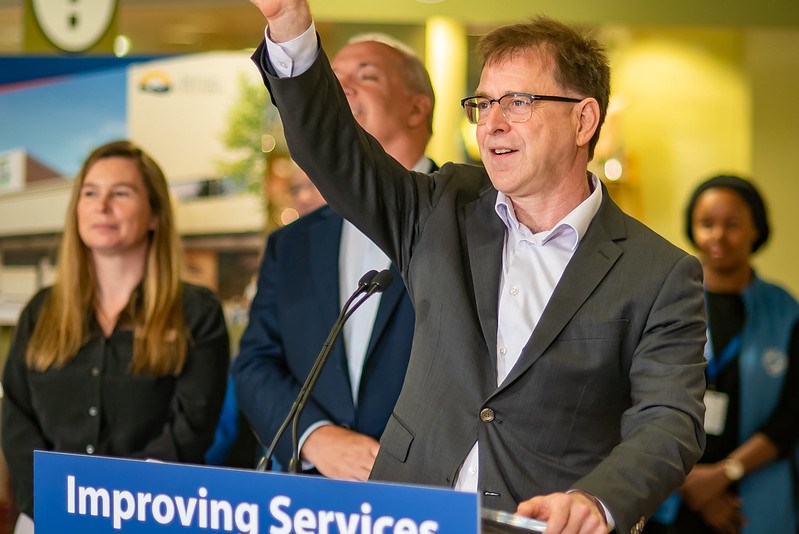The NDP has promised to create a new medical school in B.C. if re-elected, but it’s not clear whether that would help residents find a family doctor.
“Having a second medical school was not on our radar of something that was in the Top Five or the Top 10 things that you would want in order to take a look at what’s going on with the health care system, said Dr. Rita McCracken, an expert in the family doctor shortage.
The medical school is part of the NDP election platform. Vancouver Kingsway candidate Adrian Dix, who was the health minister in the NDP government, revealed Tuesday that the new school would be based at Simon Fraser University. Sixty students would be in the first class. The goal is to have that class start in 2023-24, said Dix.
Dix called the proposed school, which would include a partnership with the First Nations Health Authority to develop training to meet the needs of Indigenous communities, “transformative.”
Communities across B.C. continue to experience a shortage of family doctors despite the addition in recent years of primary care networks and urgent and primary care centres, meant to relieve pressure on hospital emergency rooms.
According to Statistics Canada, 97,800 people — or nearly 15 per cent of the population age 12 and older on Vancouver Island — had no regular health-care provider in 2015-2016.
The problem was even more pronounced in the capital region, where 18 per cent of the population or nearly 60,000 people had no regular provider, a category that includes family doctors, medical specialists and nurse practitioners.
The province has one medical school, located at the University of British Columbia. It has 288 seats in programs around the province, including 32 in the Island Medical Program at the University of Victoria.
Enrollment has increased greatly over the past 12 years, McCracken said, but that hasn’t translated to more people having family doctors.
“Despite us having seen drastically increased numbers for both medical students and family practice trainees, we have not seen a concordant decrease in people searching for a family doctor,” she said.
Most provinces similar in size to B.C. have more than one medical school, so some competition or the provision of different specialties — UBC has been research focused — could be beneficial to the province, McCracken said.
“But just producing more graduates, I don’t see any direct evidence that that is going to help us,” she said. “I’m not sure.”
She would like to see a better way to employ doctors — community health centres, for example, where physicians and other health professionals work as a team to provide longitudinal care to patients based on the community needs.
“There needs to be a dramatic shift in the way we employ family doctors,” she said. “I don’t think I think we can just continue to increase the number.”
Until there is a change, newly trained doctors will continue to specialize — working in nursing homes, addictions care, emergency medicine, sports medicine, esthetics — instead of going into family practice, she said.
New urgent and primary care centres offer much-desired team-based care, extended days and hours, and often a salary instead of the traditional fee-for-service model of payment. But McCracken said the centres are focused on episodic care — urgent cases that need to be seen with 12 to 24 hours — rather than longitudinal care for patients throughout their lifetime.
“So its essentially a really well-resourced walk-in clinic — which may be an element of what the system needs, but it is not the be all and end all,” she said.



